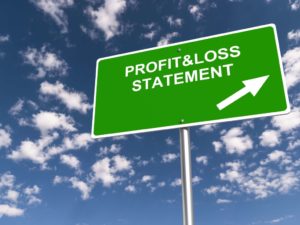
In managing the sales and revenue of an e-commerce business, it is crucial that we accurately track transactions and comply with various tax laws. We’ll discuss the specifics of invoicing and revenue recognition, as well as ensuring compliance with sales tax requirements. Moreover, custom accounting software is a reasonable choice for businesses that operate within specific local regulations and need their financial operations to be compliant. This takes the cost of goods available and retail accounting basics divides it by retail value of goods available, then multiplies it by 100 to get a percentage point.
- In the world of retail, where profit margins can be slim and competition fierce, mastering the basics of accounting and bookkeeping is non-negotiable.
- Join the Expertise Accelerated family today and let us streamline your company’s operations so you can concentrate on expanding it.
- It is crucial to prevent spoilage or expired products, which would inevitably lead to disposal.
- Yet, it’s essential to be aware of its shortcomings, especially its inability to accurately reflect price reductions, sales, or changes in markup.
- Money comes in through sales (duh!), but tracking those sales correctly makes all the difference.
Average Unit Cost (AUC)

Unlike traditional accounting, it focuses more on managing inventory than calculating costs. Retail accounting estimates inventory value by assuming uniform pricing and consistent price changes. This simplifies calculations and reduces the need for physical stock counts. Retail accounting works best for businesses with stable pricing structures. Effectively managing it critical to the success of your retail business.
How to Streamline Financial Transactions
As the enterprise develops, your financial processes will grow along with it. Schedule an online consultation with BooksTime experts today to learn how we can help your business to grow. Don’t wait until your accounting problems become too difficult to manage – tackle them now. Some organizations prefer cost accounting, which has some different features than retail accounting. More on this in a bit, but first it’s important to understand the importance of accounting for the cost of inventory retail accounting in your retail business.
- For example, your business purchased 50 bags of chips for $1 each, then at a later date, decided to buy 30 more, but the price rose to $2 each.
- These adjustments can be dealt with using either the Conventional Method or Average Cost Method.
- By understanding these key terms, you’ll be well-equipped to navigate the conversations around your retail finances with confidence and expertise.
- RetailBasics presents P&L data for any date range you specify, showing actuals and percentage of sales income for the specified period as well as compared with a previous period.
How do you calculate the retail method?
LIFO, on the other hand, evaluates inventory based on current wholesale market prices rather than what businesses actually paid for products in the more distant past. It typically calculates a higher cost of goods sold and in turn a lower profit margin, meaning this formula is used by businesses that want to lower their tax liability. RetailBasics presents P&L data for any date range you specify, showing actuals and percentage of sales income for the specified period as well as compared with a previous period. With RetailBasics retail bookkeeping software features, you can easily track business performance over time with comparison deltas in dollars and percentage terms. Strong retail bookkeeping practices and accounting software QuickBooks Accountant help create detailed financial reports.

Retail Bookkeeping With First-In-First-Out (FIFO)
The FIFO method is especially useful for perishable items and is popular among food retailers because of its practical advantages. More specifically, in retail accounting, you’ve got to value all of your inventory at retail value and then subtract your sales to estimate your remaining inventory. This will also help you determine the markup on your items, which can be used to calculate how much inventory you have left after the sale.
Weighted average

Utilize bank reconciliation statements to compare your records with your bank’s records, catching any discrepancies early on. You can do it manually, but it will be very time consuming, or it can be done using specialized software, making it easier to identify loss, damage, or theft. It’s most common in businesses that sell high-ticket items or have a smaller stock quantity. For example, if your business sells jewelry, you’ll assign a price to each item based on its material and details. Led by Mohammad Ali how is sales tax calculated (15+ years in inventory management software), the Cash Flow Inventory Content Team empowers SMBs with clear financial strategies. We translate complex financial concepts into clear, actionable strategies through a rigorous editorial process.
